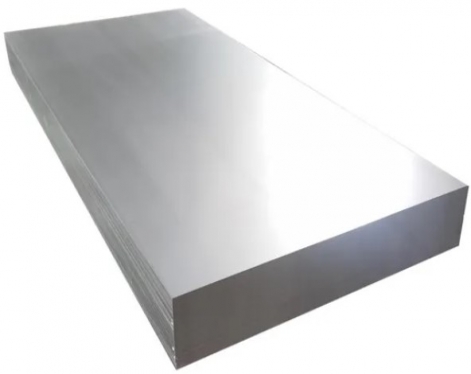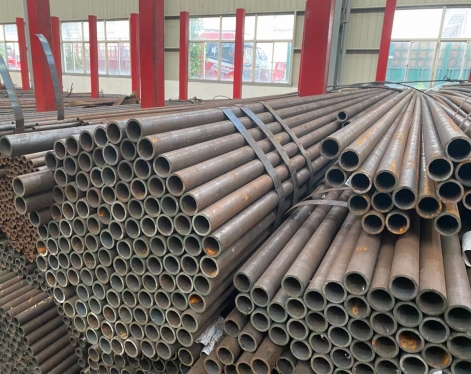In our daily life and industrial production, 304 stainless steel plates can be seen everywhere. From pots and pans in the kitchen to decorative pipes and handrails in the construction field; from food processing equipment to medical equipment, 304 stainless steel plates have become the ideal choice for many industries due to their excellent properties. Many people only know that the 304 series is a good product, but they don't know the difference between 304 stainless steel plates and other types of plates. Let us give you a detailed introduction:
1. Oil-grinding wire drawing:
After oil-grinding, 304 stainless steel plate has perfect decorative effect and is widely used in decorative panels such as elevators and home appliances. After one grinding, cold-rolled 304 stainless steel plate can generally achieve good results. At present, there are some processing centers on the market that can provide oil-based frosting of hot-rolled stainless steel, and the effect is comparable to that of cold-rolled oil mills. Oil-based drawing is also divided into long filaments and short filaments. Filaments are generally used for elevator decoration, and various small appliances, kitchen utensils and other lines have options.
2. Dry grinding wire drawing:
The long and short wires that are more common in the market, after 316 stainless steel plates, etc., the surface of stainless steel after processing shows good decorative effects, which can meet the requirements of general decorative materials. Generally speaking, 304 stainless steel plates can form good effects after a single scrubbing. Because this processing equipment has low cost, simple operation, low processing cost, and is widely used, it has become a necessary equipment for machining centers. Therefore, most machining centers can provide grinding plates with fine wires and short wires, of which 304 steel accounts for more than 80%.
3. 8K processing:
In 8K processing, 304 stainless steel plate is significantly better than 200 stainless steel. 8K grinding of 2B cold-rolled surface usually achieves a mirror effect after one processing. At present, the 8K grinding process using nitric acid and red iron oxide is inexpensive, the cost of the equipment itself is low, the overall grinding cost is low, and it is widely promoted.
4. Titanium:
The choice of high-grade decorative materials has a gorgeous effect. 304 stainless steel plates have been used for titanium decoration since ancient times and are widely used in elevators and building decorative materials.

Key heat treatment processes
Heat treatment is the key to tapping the inherent performance potential of 304 stainless steel plates and plays a vital role in improving their performance. Through precise heat treatment, the microstructure of 304 stainless steel plates is optimized, thus showing more outstanding performance.
1. Principle and purpose
Heat treatment changes the internal crystal structure of 304 stainless steel plates by heating, heat preservation and cooling. During the heating process, atoms gain energy, the lattice structure begins to change, and carbides gradually dissolve; the heat preservation stage ensures that atoms are fully diffused and the structural transformation is more uniform; during cooling, atoms rearrange to form different microstructures, such as austenite, ferrite, etc., thereby improving corrosion resistance, mechanical and cutting performance. For example, in the field of construction, heat-treated 304 stainless steel plates can better withstand the pressure of building structures, resist atmospheric corrosion, and extend the service life of buildings.
2. Process Flow
The heat treatment process is rigorous and critical. Preheating is the first step. Slowly heat the 304 stainless steel plate to a certain temperature to reduce thermal stress and prevent deformation and cracking. Preheating is particularly important when heat treating thick plates. Then heat to a suitable temperature, usually 1050-1150℃, to allow the carbides to fully dissolve. The insulation stage makes the temperature inside the plate uniform and the atoms diffuse fully. The time is determined according to factors such as the thickness of the plate.
There are various cooling methods. Water cooling has a fast speed, which can obtain fine grain structure and improve strength and hardness; air cooling has a slow speed, the structure is relatively coarse, and the toughness is better. Finally, post-processing is performed to eliminate residual stress and improve surface quality, such as shot peening to improve surface hardness and fatigue strength.
Read more: Key Points for Purchasing 304 Stainless Steel Plates
1. Oil-grinding wire drawing:
After oil-grinding, 304 stainless steel plate has perfect decorative effect and is widely used in decorative panels such as elevators and home appliances. After one grinding, cold-rolled 304 stainless steel plate can generally achieve good results. At present, there are some processing centers on the market that can provide oil-based frosting of hot-rolled stainless steel, and the effect is comparable to that of cold-rolled oil mills. Oil-based drawing is also divided into long filaments and short filaments. Filaments are generally used for elevator decoration, and various small appliances, kitchen utensils and other lines have options.
2. Dry grinding wire drawing:
The long and short wires that are more common in the market, after 316 stainless steel plates, etc., the surface of stainless steel after processing shows good decorative effects, which can meet the requirements of general decorative materials. Generally speaking, 304 stainless steel plates can form good effects after a single scrubbing. Because this processing equipment has low cost, simple operation, low processing cost, and is widely used, it has become a necessary equipment for machining centers. Therefore, most machining centers can provide grinding plates with fine wires and short wires, of which 304 steel accounts for more than 80%.
3. 8K processing:
In 8K processing, 304 stainless steel plate is significantly better than 200 stainless steel. 8K grinding of 2B cold-rolled surface usually achieves a mirror effect after one processing. At present, the 8K grinding process using nitric acid and red iron oxide is inexpensive, the cost of the equipment itself is low, the overall grinding cost is low, and it is widely promoted.
4. Titanium:
The choice of high-grade decorative materials has a gorgeous effect. 304 stainless steel plates have been used for titanium decoration since ancient times and are widely used in elevators and building decorative materials.

Key heat treatment processes
Heat treatment is the key to tapping the inherent performance potential of 304 stainless steel plates and plays a vital role in improving their performance. Through precise heat treatment, the microstructure of 304 stainless steel plates is optimized, thus showing more outstanding performance.
1. Principle and purpose
Heat treatment changes the internal crystal structure of 304 stainless steel plates by heating, heat preservation and cooling. During the heating process, atoms gain energy, the lattice structure begins to change, and carbides gradually dissolve; the heat preservation stage ensures that atoms are fully diffused and the structural transformation is more uniform; during cooling, atoms rearrange to form different microstructures, such as austenite, ferrite, etc., thereby improving corrosion resistance, mechanical and cutting performance. For example, in the field of construction, heat-treated 304 stainless steel plates can better withstand the pressure of building structures, resist atmospheric corrosion, and extend the service life of buildings.
2. Process Flow
The heat treatment process is rigorous and critical. Preheating is the first step. Slowly heat the 304 stainless steel plate to a certain temperature to reduce thermal stress and prevent deformation and cracking. Preheating is particularly important when heat treating thick plates. Then heat to a suitable temperature, usually 1050-1150℃, to allow the carbides to fully dissolve. The insulation stage makes the temperature inside the plate uniform and the atoms diffuse fully. The time is determined according to factors such as the thickness of the plate.
There are various cooling methods. Water cooling has a fast speed, which can obtain fine grain structure and improve strength and hardness; air cooling has a slow speed, the structure is relatively coarse, and the toughness is better. Finally, post-processing is performed to eliminate residual stress and improve surface quality, such as shot peening to improve surface hardness and fatigue strength.
Read more: Key Points for Purchasing 304 Stainless Steel Plates









